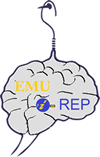JavaScript is disabled for your browser. Some features of this site may not work without it.
| dc.contributor.advisor | Kükrer, Osman | |
| dc.contributor.author | Ghazal, Yaser F.N. | |
| dc.date.accessioned | 2023-07-10T08:51:37Z | |
| dc.date.available | 2023-07-10T08:51:37Z | |
| dc.date.issued | 2022-02 | |
| dc.date.submitted | 2022-02 | |
| dc.identifier.citation | Ghazal, Yaser F.N. (2022). Single-Phase Current-Source Rectifier Closed-Loop Control with Active Power Decoupling Based on LC Resonator Emulation. Thesis (M.S.), Eastern Mediterranean University, Institute of Graduate Studies and Research, Dept. of Electrical and Electronic Engineering, Famagusta: North Cyprus. | en_US |
| dc.identifier.uri | http://hdl.handle.net/11129/5670 | |
| dc.description | Master of Science in Electrical and Electronic Engineering. Institute of Graduate Studies and Research. Thesis (M.S.) - Eastern Mediterranean University, Faculty of Engineering, Dept. of Electrical and Electronic Engineering, 2022. Supervisor: . Supervisor: Prof. Dr. Osman Kükrer. | en_US |
| dc.description.abstract | ABSTRACT: AC-DC converters are power electronic systems which are used in a variety of industrial applications. These systems are better and more efficient than the regular AC-line commutated thyristor converters. The AC-DC converters can be regulated to draw sinusoidal currents from an AC source with variable power factor. Furthermore, they can produce smoother output voltages than the output voltages produced by the classical converters, especially in the three-phase usages. Nevertheless, in single-phase usages the output voltage of a PWM converter has a naturally occurring second harmonic component, which requires the use of a large output capacitor for separating this component. But even when using a large capacitor (which raises the proportions and cost of this me of converter) it is still not possible to eliminate the second harmonic completely. A better option for eliminating the second harmonic issue is to use an LC resonator that is modified or adjusted to eliminate this harmonic. This option can be easily applied in AC-DC converters of the current source type. In this thesis, the LC resonator-based single-phase converter will be considered. The work will be based on an IEEE Transaction paper. Firstly, the basic theory of this AC-DC converter will be revised, then the control strategy planned for eliminating the second harmonic component (which is based on active power decoupling) will be analyzed. Simulations on the single-phase current source converter will be done on Simulink. The simulations will be designed to assess the performance of the planned control strategy. Possible failures of the control strategy will be acknowledged, and adjustments will be made accordingly. Keywords: active power decoupling, LC Tank, ripple power, single-phase current source rectifier. | en_US |
| dc.language.iso | eng | en_US |
| dc.publisher | Eastern Mediterranean University (EMU) - Doğu Akdeniz Üniversitesi (DAÜ) | en_US |
| dc.rights | info:eu-repo/semantics/openAccess | en_US |
| dc.subject | Electrical and Electronic Engineering Department | en_US |
| dc.subject | Electric power systems - Power converters | en_US |
| dc.subject | Electric current converters | en_US |
| dc.subject | Control devices - Electrical engineering | en_US |
| dc.subject | Power Electronics - Electric current converters | en_US |
| dc.subject | Active power decoupling, LC Tank, ripple power, single-phase current source rectifier | en_US |
| dc.title | Single-Phase Current-Source Rectifier Closed-Loop Control with Active Power Decoupling Based on LC Resonator Emulation | en_US |
| dc.type | masterThesis | en_US |
| dc.contributor.department | astern Mediterranean University, Faculty of Engineering, Department of Electrical and Electronic Engineering | en_US |









